Guest writer for Wake Up World
Regardless of where you are on the spiritual path and what your relationship is like with Christianity, there’s a pulsating core of mystical Divine Love at the heart of Jesus’ teachings.
And this impassioned blaze of Love has been felt by people all over the world in many spiritual and religious traditions – not just Christianity.
‘Christ Consciousness’ is a term that I’m sure you’ve heard mentioned at least once on your inner wanderings, and it’s a phrase shrouded in mystery.
[pro_ad_display_adzone id=”110028″]
Firstly, let’s explore a simple working definition, and then go a little more in-depth:
[Note: I’m aware that fundamentalist Christians and anti-religious people alike will likely take issue with this article. If you’re one of these people, you’d be best to leave (or else stay with an open heart) as this article is for the mystics-at-heart. I’m not interested in arguing or “proving who’s right” in the comments. Let’s try to spread love! Thanks and best wishes!]
What is Christ Consciousness?

Christ Consciousness is a mystical term that refers to a spiritually evolved state of being. When we observe the life and message of Jesus Christ, we can see the qualities of love, devotion, courage, and surrender at the center of his teachings and example. The term ‘Christ Consciousness,’ therefore, refers to the embodiment of these qualities in our lives.
Christ Consciousness – This isn’t a New Age Concept
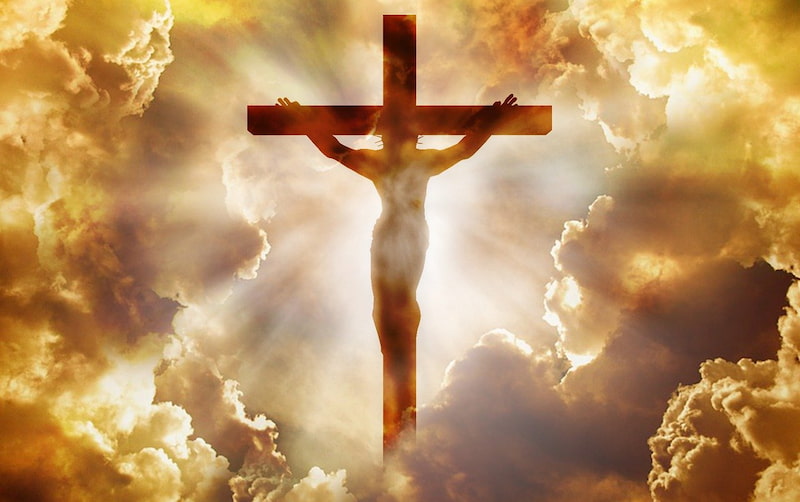
The term ‘Christ Consciousness’ has and will continue to be used by the new age – a movement characterized by a watered-down and good-vibes-only approach to spirituality. And that’s fine, everyone has their own approach to the Divine based on where they’re at in life.
But the Christ Consciousness I’m referring to in this article isn’t a warm-and-fuzzy new age concept; it’s a deeper mystical truth that can be felt and experienced in both the light and dark times of life.
The difference here is that I’m not necessarily encouraging you to pray to Jesus and ask him to protect you or hover over you like a daddy figure – again, nothing against that if that’s what you need.
Instead, the Christ Consciousness I’m referring to is about meeting the grit and grime of life through the heart of love, devotion, courage, and mystical surrender as Jesus did.
Not only can Christ Consciousness be seen as an approach to life, but it can also be seen as a fundamental part – or even “goal” (as inaccurate and mind-centered as that is) – of the spiritual awakening process itself.
Spiritual Awakening, Christ Consciousness, and What Jesus Symbolizes

Having been raised in a fundamentalist Christian family, I’m profoundly familiar with the Christian message, at least in its stripped-of-mysticism-and-replaced-with-dogma sense.
But despite the religious trauma I’ve been subjected to, have gone on a journey to heal, and in many ways, continue to experience, there’s something in the heart of Christianity that’s still vibrantly relevant and inspiring.
Increasingly, the notion of ‘Christ Consciousness’ is coming into the mainstream, and I think that’s beautiful because it points to the hidden depths of Jesus’ message, his importance to humanity, and what he ultimately symbolizes.
So how is Christ Consciousness related to spiritual awakening? Put simply, Christ Consciousness is another word for Self-realization, Oneness, Samadhi, Nirvana, or Spiritual Enlightenment.
BUT, Christ Consciousness is unique in that it’s a very specific, very profound form or ‘flavor’ of spiritual Oneness.
In the words of mystical scholar Andrew Harvey,
[Jesus] came to exemplify the divinity of every single human being and to give to the human race the outrageous possibility of a direct divine relation with God: a direct gnostic ecstasy which would also be an ecstasy of service and justice.
The sublime paradox of Jesus I want to point out here is that he is both human and divine. As St. Paul the Apostle writes about Jesus:
Let this mind be in you, which was also in Christ Jesus: Who, being in the form of God, thought it not robbery to be equal with God: But made himself of no reputation, and took upon him the form of a servant, and was made in the likeness of men.
(Philippians 2:5-11)
Here we can see the reality of Jesus as the son of man and the son of God, symbolic of both his sacred and wild nature.
Symbolism of the Cross & Jesus

Perhaps the most dominant symbol associated with Jesus is the cross on which he was crucified. This is an image with profound significance to Jesus’ message as it represents a union of opposites. Or in the words of Hermes Trismegistus – a man purported to walk the earth even before the biblical Moses:
As above, so below, as within, so without.
We can see that the vertical line of the cross represents the axiom “as above, so below” and the horizontal line meaning “as within, so without.”
In the Gospel of Thomas, Jesus mirrors these words, saying,
Rather the kingdom is inside of you, and it is outside of you. When you come to know yourselves, then you will be known, and you will realize that you are the children of the Father.
Symbolism of the Vesica Pisces & Jesus
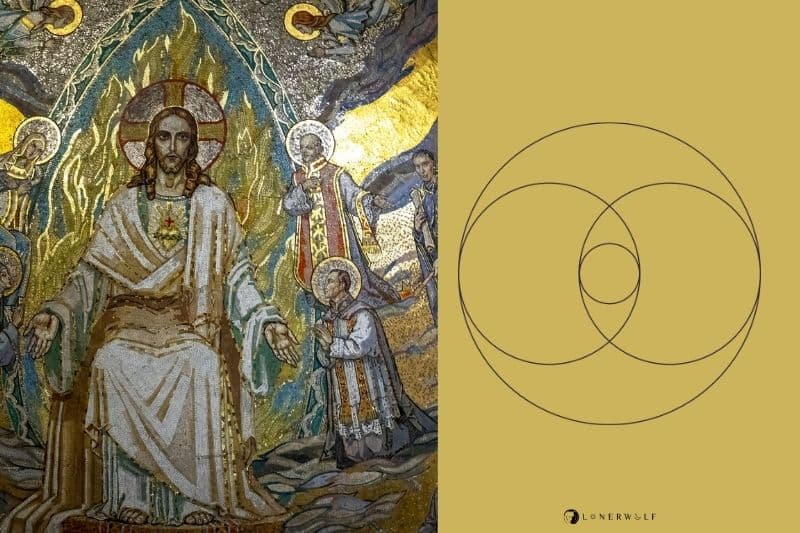
Another image that theologian and author Meggan Watterson comments is “the shape that surrounds Christ in most images and icons of him” is the Vesica Pisces.
Again, such an iconic Christian symbol is also representative of the union of opposites, or the ‘hieros gamos’ (sacred marriage) between the heart and mind, male and female, light and dark – and essentially all duality.
These two overlapping circles, once again, express the human and divine paradoxical nature of Jesus, thereby revealing a central mystery of his message: spiritual integration.
Christ Consciousness is, therefore, another word or idea that points to the notion of spiritual integration; of learning to not only use the heart but also the mind. To embrace your flawed humanity and luminous divinity. And of course, to recognize ‘God’ as both an immanent and transcendent force.
Such a mystically unified state of being has a different quality from other spiritual experiences, and we’ll explore why next.
Christ Consciousness vs. Buddha Nature
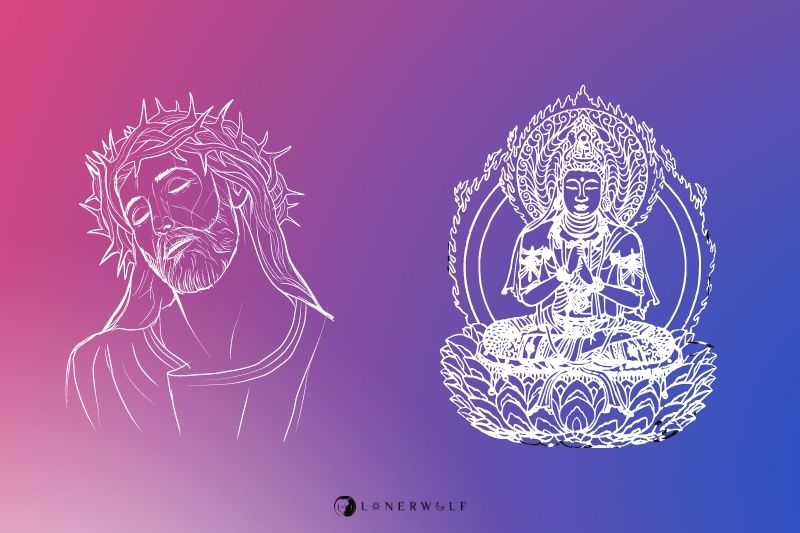
I’m sure you’ve heard the expression “Buddha Nature” or “Buddha-Mind” spoken about before. In fact, it’s far more likely (in my experience) to hear of this Buddhist-sounding phrase than the term ‘Christ Consciousness.’
Sometimes, these two terms are used synonymously. And on an absolute level, I can see why such phrases are used interchangeably – they’re pointing to the same One truth. But is there a difference?
Yes, I do believe that there’s a subtle difference between Christ Consciousness and Buddha Nature. Furthermore, in my perspective, understanding the difference between these two ideas can help us understand what we might have glimpsed or experienced on our spiritual awakening journeys.
When we look at the two distinctly unique figures of Siddhartha Gautama (Buddha) and Jesus of Nazareth/Yeshua (Jesus Christ), we can immediately see a difference, which I’ll summarize in bullet points below:
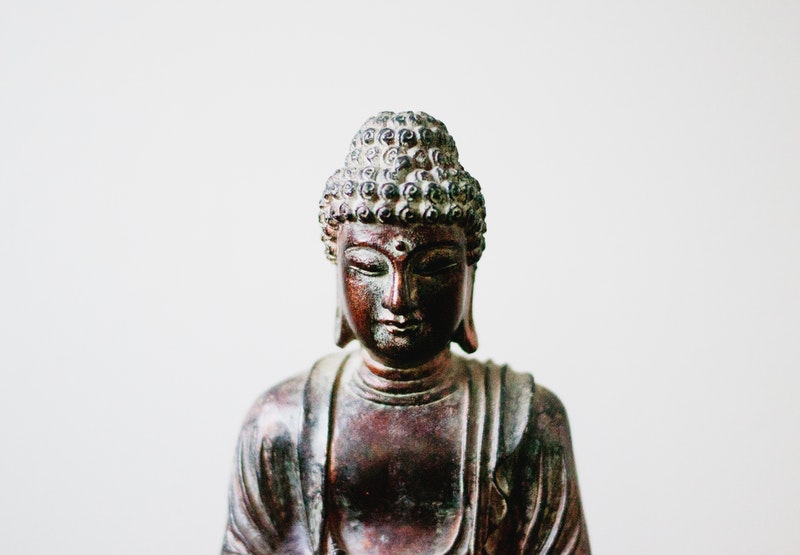
Buddha:
- Peace
- Serenity
- Silence
- Stillness
- Concentration
- Meditation
- Symbol: the lotus flower, Dharma wheel, and bodhi tree

Jesus:
- Pain
- Suffering
- Torture
- Pierced heart
- Faith
- Ascension
- Symbol: the cross, lamb, sacred heart, fish
In the above very simplistic, very brief breakdown of Jesus and Buddha, we can see clearly a difference: Buddha’s a pretty chill dude. But Jesus? Well, it seems like he got the short end of the stick, doesn’t it? He’s in a whole world of pain and torment in a lot of images that we see of him.
And yet, despite this blatant contrast, both are pointing to something that lies beyond the individual ego self.
In fact, many of their sayings are similar. Take the following quotes for example:
Do to others as you would have them do to you. – Jesus (Luke 6:31)
Consider others as yourself. – Buddha (Dhammapada 10:1)
If anyone strikes you on the cheek, offer the other also. – Jesus (Luke 6:29)
If anyone should give you a blow with his hand, with a stick, or with a knife, you should abandon any desires and utter no evil words. – Buddha (Majjhima Nikaya 21:6)
Everyone who commit sin is a slave to sin. – Jesus (John 8:34)
People compelled by craving crawl like snared rabbits. – Buddha (Dhammapada 24:9)
There are a whole bunch of other parallel sayings (see ‘Jesus & Buddha: The Parallel Sayings‘ edited by Marcus Borg for more examples), but the above should suffice to show their similarities.
So then, recognizing both the similarities and differences between both Jesus and Buddha, where does Christ Consciousness differ from Buddha Nature?
In a nutshell, Christ Consciousness speaks about the awakening of the heart and the integration of opposites: the sacred union of spirit and flesh, inner and outer, light and dark – it’s very non-dualistic and unifying.
Buddha Nature, on the other hand, refers to the awakening of the mind which we can see represented in the iconography of Buddhism and in Buddhist teachings. Instead of integration, Buddha Nature is about transcending desire, ego attachment, and the rediscovery of primordial Consciousness.
As such, we can see that there are at least two types of ‘advanced’ or deeper awakening present in the spiritual journey: heart awakening (or Christ Consciousness) and mind awakening (Buddha Nature).
One form of awakening comes through love, devotion, courage, and surrender as exemplified by Jesus. The other form of awakening comes through establishing mental clarity, detachment, and mindfulness, as exemplified by Buddha.
Christ Consciousness is, therefore, the path of heartfulness – it is a yin or immanent path. Whereas Buddha Nature is the path of mindfulness – it is yang and is a transcendent path.
Both can work together or independently.
How to Cultivate Christ Consciousness (4 Mystical Practices)
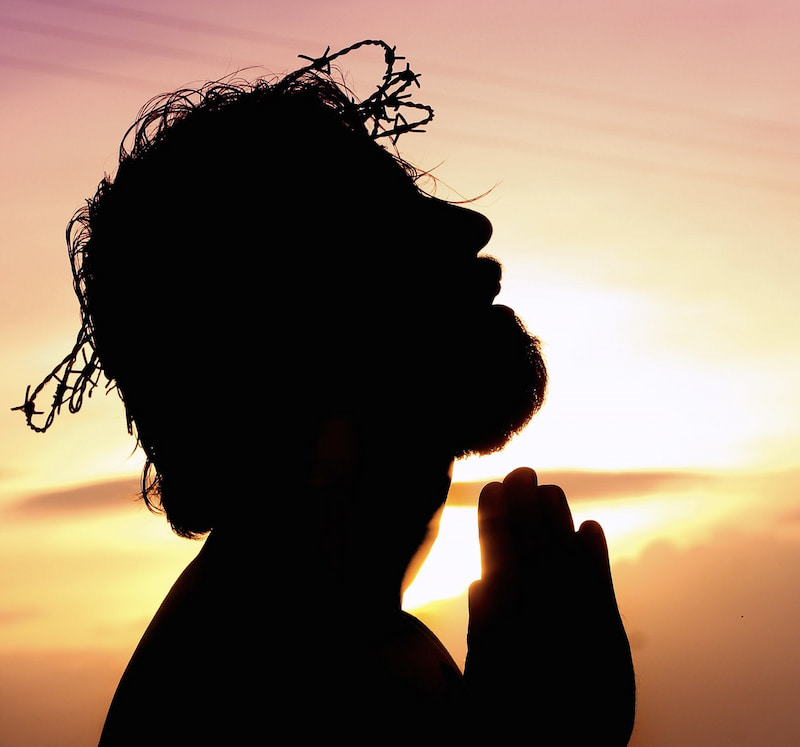
Underneath the dogma, the dry subjective patchwork of historically edited biblical texts, and immense baggage of the Christian church dwells this exquisite mystic known as Jesus.
If you’re drawn to cultivating Christ Consciousness, or at least exploring it for yourself more, here are some practices I recommend:
1. Honor the power of prayer
I’ve written before that prayer is kind of a “black sheep” in the (mainstream) spiritual community due to its religious connotations. Yet don’t discount the power of prayer!
Sages, mystics, and spiritual practitioners of all shapes and sizes have used prayer through the ages to commune with the Divine. Feel free to totally reinterpret or reenvision prayer so that it meets your heart’s needs and desires – you don’t need to stick with old, dry forms of this meaningful practice.
The beauty of prayer is that it is a doorway to grace. Grace is that mysterious force that sometimes appears in our lives in moments of struggle or need.
In the words of Jesus:
Ask, and it shall be given to you, seek, and ye shall find, knock, and it shall be opened unto you.
(Mat 7:7)
Here, quite literally, Jesus is encouraging the practice of prayer, and he himself is recorded to have prayed quite intensely in the New Testament.
So be open to prayer. Pray to connect with Christ Consciousness. Pray for whatever deep needs you have. (And remember, be mindful of what you pray for because more often than not, it will come to you in some form or another!)
For more guidance, see my article on the Power of Prayer!
2. Cultivate heartfulness
If being mindful means approaching life from a mentally clear and present space, being heartful means approaching life from an emotionally clear and present space.
Heartfulness (or ‘Kindfulness’ in the words of my local Buddhist spiritual director Ajahm Brahm), is the practice of healing, opening, and tending to the heart.
But how do we cultivate heartfulness and therefore Christ Consciousness, which by its very nature is heart-centered?
Here are some ideas:
- Practice Metta or lovingkindness meditation each day
- Notice any areas of life that tend to fuel your mind with fear, paranoia, or hatred (thereby restricting the heart) such as social media, the news, or certain environments, and reduce or totally remove them
- Keep a gratitude journal or have a little gratitude practice each day where you contemplate all that you’re thankful for
- Be of service to others whether that is through holding space for a friend, helping out a family member, volunteering, or providing the support someone in need requires
- Choose a mantra or affirmation (such as the Heart Sutra or a statement such as “I open my heart to love) and use it during the day as an ongoing form of meditation and centering
- If you work with chakra energy centers, focus on your heart chakra
3. Incorporate inner work into your daily life
In the Gospel of Thomas, Jesus is recorded to have said,
If you bring forth what is within you, what you bring forth will save you. If you do not bring forth what is within you, what you do not bring forth will destroy you.
These words perfectly highlight the necessity of inner work which is the practice of shining the light of awareness onto your inner landscape for the purposes of self-exploration, self-understanding, healing, and spiritual transformation.
The three main inner work practices that I have extensively explored, practiced, and written about before are (1) self-love, (2) inner child work, and (3) shadow work.
I always recommend cultivating self-love and a compassionate relationship with yourself first as it sets the ground for the other two forms of inner work (inner child and shadow work), making them much easier.
There are many ways to incorporate inner work into your life. Some examples include journaling, dream analysis, pathworking, shamanic journeying, somatic therapies, mirror work, art therapy, and many other practices. Choose what resonates with you!
I’ve co-authored three premium journals to support this inner work which can be purchased from the lonerwolf shop, and they are the:
4. Contemplate the words of Jesus and the Christian Mystics
In his book ‘Resurrecting Jesus,’ Zen spiritual teacher Adyashanti recommends the Gospel of Thomas and the Gospel of Mark as two rich places to contemplate the words of Jesus.
The Gospel of Thomas, in particular, offers a more “koan” type of experience in which the entire book is composed of Jesus’ sayings.
There are also many Christian Mystics who can provide a unique doorway into the heart of Christ Consciousness such as St. John of the Cross, Meister Eckhart, Julian of Norwich, Hildegard of Bingen, St. Teresa of Ávila, and many, many others.
Take your pick!
Then, try and devote a little time each day to contemplate their words or Jesus’ words (or both).
Contemplation means to simply hold in your mind a word, sentence, or image and let it sink into you, without trying to analyze or dissect what it “might mean.” Contemplation is an action that takes you deeper into the heart than the mind.
Christ Consciousness Quotes
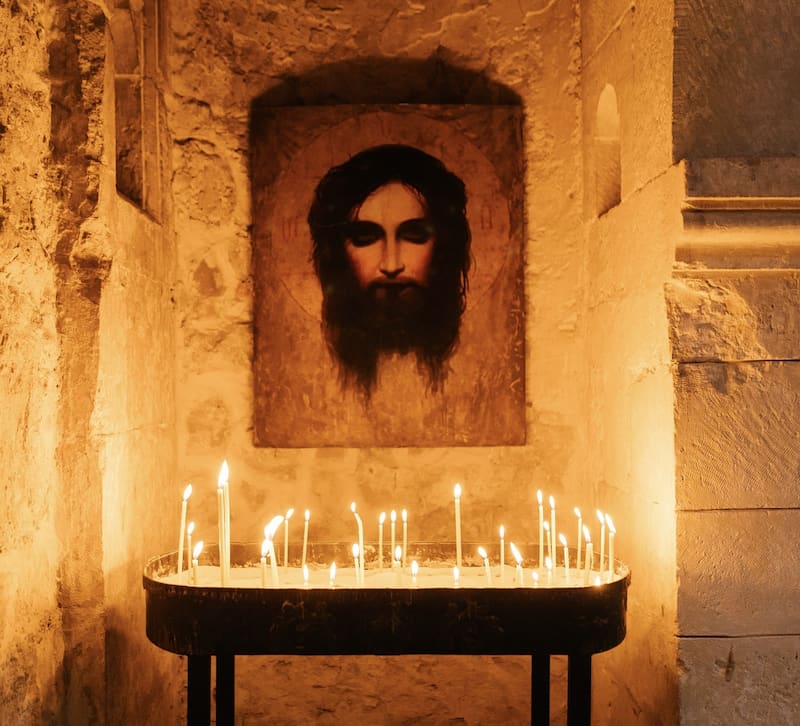
In honor of the previous point about contemplation, here are some illuminating quotes from both Jesus and other figures, that point toward Christ Consciousness.
You’re welcome to take these quotes as a point of meditation or contemplation or to simply enjoy them.
The light of Jesus, the light of the world, is the light of our own awareness.
– Adyashanti
Behold thine immortal Self resurrected with Christ in the illuminating Light of Christ Consciousness, present in every soul, every flower, every atom.
– Paramahansa Yogananda
Christ wasn’t a Christian and Buddha wasn’t a Buddhist and Muhammad wasn’t Muslim. These people were having the experience of unity consciousnesses and universal consciousness and they spoke of it in words.
— Deepak Chopra
When a person experiences ego transcendence or enlightenment, we often say she has merged with the Light or with God, the Self, Buddha-nature, Christ consciousness, Emptiness, or Being — the ultimate sacred Other.
– Bill Plotkin
The kingdom of God is within you.
– Jesus (Luke 17:21)
Let us meditate until we perceive the Infinite Christ reigning in our own hearts. Let us learn to love those who love us not; and to forgive those who do ill against us. Let us break all our mental boundaries of color, creed, and nationality, and receive all – even our inanimate and animal brothers – in the endless, all embracing arms of our Christ Consciousness. This will be a true and fitting celebration of the coming of Jesus Christ to this earth.
– Paramahansa Yogananda
Christ Speaks:
In your gentle hand
hold my love in your palm
Once my hands were thorny and bloody,
yet I still beam love to humanity
through my heart,
mine eyes, mine soul,
imbued by the most gentle hands of all
Our Holy Spiritual Oneness
? Ramon Ravenswood
Remember always that the goal of awakening, of self-awareness, of living in higher consciousness is always about the very same thing that Christ brought into the world which is unconditional, agape love.
? Theodore J. Nottingham
Love thy neighbor as thyself.
– Jesus (Matthew 22:39)
But to you who are listening I say: Love your enemies, do good to those who hate you, · bless those who curse you, pray for those who mistreat you.
– Jesus (Luke 6:27)
God is never out of the soul in which He dwelleth blissfully without end.
– Julian of Norwich
The eye through which I see God is the same eye through which God sees me; my eye and God’s eye are one eye, one seeing, one knowing, one love.
– Meister Eckhart
Final Words

Christ Consciousness is a beautiful and multi-layered term that refers to Divine Love, spiritual integration, and the process of heart awakening; a form of Illumination and transformation that happens at deeper levels of spiritual awakening.
Wherever you are on this path and whatever relationship you have with more traditional forms of Christianity, there is a mystical core at the root of every tradition that points to the Oneness underlying all existence.
Christ Consciousness is that unifying force of the sacred Heart that we all have access to if only we are open – it is an expression of our True Nature.
Do you know of any quotes that you think I should add to this article about Christ Consciousness? If so, I’d love to hear them below!
Also, feel free to share this article if you feel it might help or inspire someone else!
About the author:
Aletheia Luna is a prolific psychospiritual writer, author, and spiritual mentor whose work has touched the lives of millions worldwide. As a survivor of fundamentalist religious abuse, her mission is to help others find love, strength, and inner light in even the darkest places. She is the author of hundreds of popular articles, as well as numerous books and journals on the topics of Self-Love, Spiritual Awakening, and more. See more of her work at lonerwolf.com.
This article, 5 Practices for Being Present, was originally published on lonerwolf.com, reproduced with permission.
[pro_ad_display_adzone id=”110027″]








